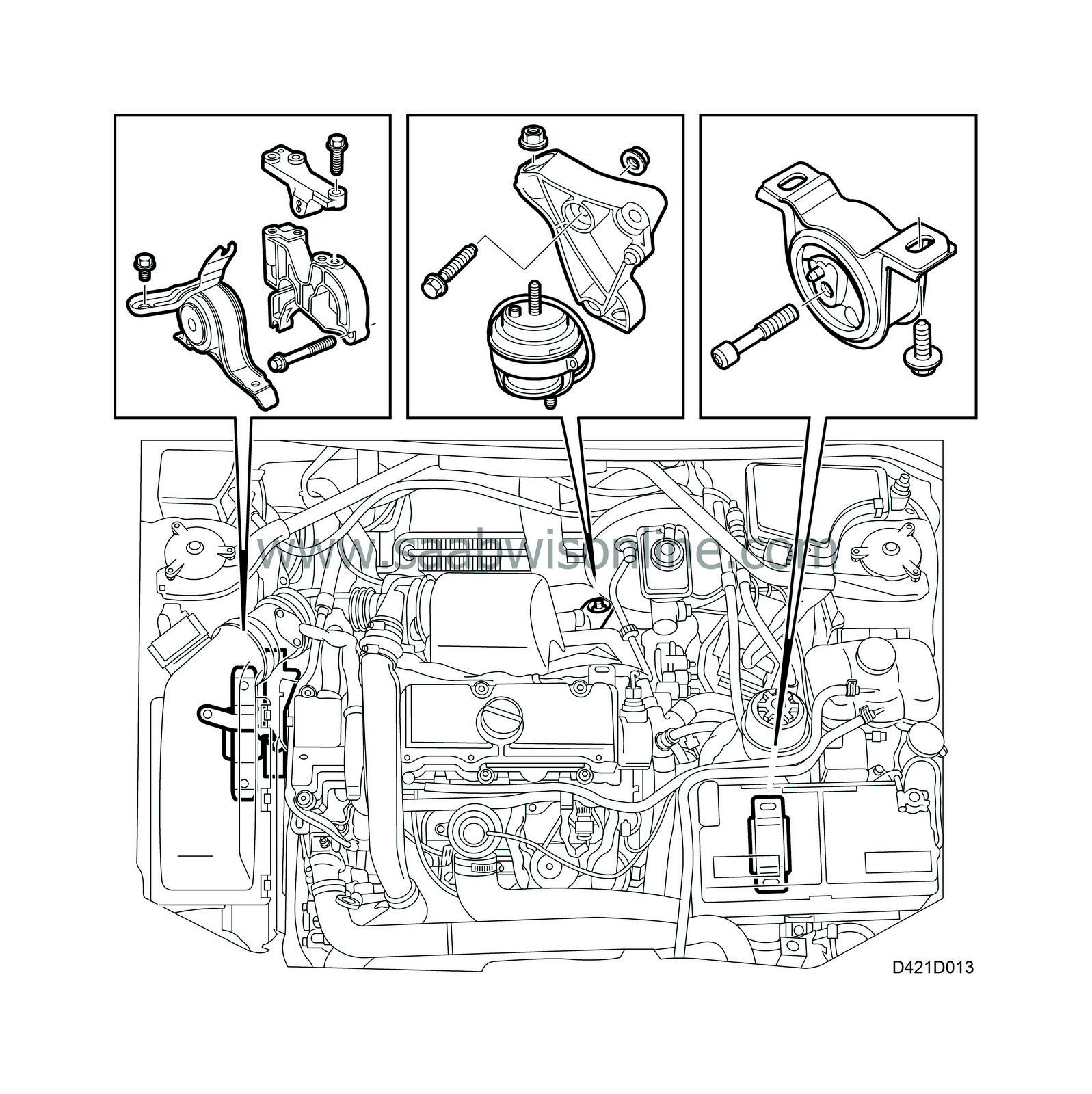Engine mountings
| Engine mountings |
| Background |
The most efficient range of operation for the balancer shafts is at low engine speeds, while their effect decreases at higher speeds.
To efficiently dampen engine movement in this range, the rear and the front right engine mountings are hydraulic. Their most efficient range of operation is between idling speed and about 1800 rpm.
Hydraulic engine mountings improve the following points:
| • |
damping of horizontal engine movements during acceleration
|
|
| • |
damping of vertical engine movements on bumpy roads
|
|
| • |
suppressing noise between engine and body.
|
|
| Description |
The hydraulic mounting consists of two chambers filled with a special damping fluid. There is a diaphragm and a passage between the two chambers where the length and cross-sectional area of the passage determines the damping characteristics of the mounting. The diaphragm absorbs the forces generated by the normal small movements of the engine.
The affect of the diaphragm is not sufficient to dampen more pronounced engine movement. Fluid is forced from the upper chamber to the lower chamber, equalizing the pressure. This gives the hydraulic mounting a progressive damping action, resulting in increased resistance with increased load.



